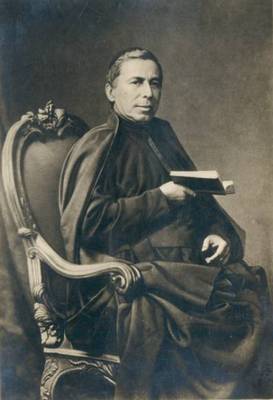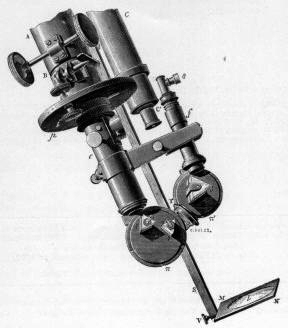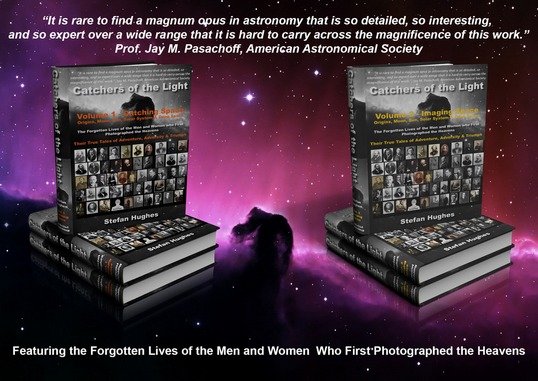'God's Astronomer'

Born: 29th June 1818, Reggio Emilia, Emilia-Romagna, Italy
Died: 26th February 1878, Rome, Lazio, Italy
Father Pietro Angelo Secchi was a Jesuit Priest and a pioneer of astronomical spectroscopy. The work for which he is best remembered is his Spectral Classification System; which ultimately led to the Harvard Classification of Stellar Spectra developed by Williamina Fleming, Antonia Maury and Annie Jump Cannon in the 1890s and early 1900s.
The Roman Catholic Church has always kept a close eye on the heavens, but even more so, on the astronomers who studied it:
“I, Galileo, being in my seventieth year, being a prisoner and on my knees, and before your Eminences, having before my eyes the Holy Gospel, which I touch with my hands, abjure, curse, and detest the error and the heresy of the movement of the earth.”
In these words the Italian astronomer Galileo Galilei (1564-1642) had recanted his belief that the Earth revolved around the Sun, and that the Earth was indeed the centre of the Kingdom of Heaven. It was the year 1633 and nothing could move the Catholic Church away from the view that God’s Universe was perfect and without flaws. The Earth did not move; there were no spots on the surface of the Sun or craters on the Moon; and almost certainly no dark lines could be seen emanating from the stars. Galileo renouncing what he knew to be true in his heart, was exiled to his villa at Arcetri near Florence in 1634, where he spent the remainder of his life under house arrest.
In 1818 there was born a man who in later life would see all of these things, including the dark absorption lines in the spectra of stars. What is remarkable is that his name was Father Pietro Angelo Secchi, a Jesuit Priest; and firm believer in both his church, and a heaven based on science, not on what his religion wanted it to be.
In 1877 Secchi published the results of his great study of 4000 fixed stars, in which he argued that all stars could be classified according their chemical nature as exhibited by the various dark absorption lines found in their spectra. Furthermore this classification could be achieved by using only five spectral types. These later became known as ‘Secchi Classes’.
The pioneering work of Secchi in the Spectral Classification of Stars, ultimately led to the Harvard Observatory’s Classification as developed by Williamina Fleming, Antonia Maury and Annie Jump Cannon in the 1890s and early 1900s. This in turn formed the basis of the currently accepted Morgan-Keenan system.
The accurate classification of stars according to the characteristics of their spectra was the start needed by others to begin the process of understanding their structure and evolution, from the moment of their birth amongst vast clouds of gas and dust, to an end which produces white dwarfs, neutron stars and black holes - bodies as strange as they are unbelievable.
Father Secchi lived a contented life within the embrace of his venerated Catholic Church and his beloved Pope, but at the same time conducting astronomical research into the very nature of a ‘flawed’ universe. Yet two centuries earlier this very same research would have condemned him to exile or even death.
How could this be? How did Pietro Angelo Secchi on his death in 1878 enter the ‘Kingdom of Heaven’ with the full blessing of the Holy Catholic Church, as both Jesuit and Astronomer?
To read more on his life and work read the eBook chapter on Pietro Angelo Secchi or buy the Book 'Catchers of the Light'.

Pietro Angelo Secchi's, Spectroscope, c1866

Buy the eBook or Printed Book at the 'Catchers of the Light' shop.